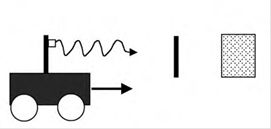
Human Hearing
 المؤلف:
Franklin Potter and Christopher Jargodzki
المؤلف:
Franklin Potter and Christopher Jargodzki
 المصدر:
Mad about Modern Physics
المصدر:
Mad about Modern Physics
 الجزء والصفحة:
p 100
الجزء والصفحة:
p 100
 5-11-2016
5-11-2016
 684
684
Human Hearing
The human eardrum is sensitive to displacements of less than the diameter of an atomic nucleus. How have such minute displacements been measured via nuclear physics techniques?
Answer
The Mossbauer Effect has been used to determine these actual displacements of an eardrum. The Mossbauer Effect utilizes the recoil-less emission of a 14.4 KeV gamma ray (photon) from an Fe-57 nucleus, say, and this gamma ray is normally absorbed by an Fe-57 nucleus in another object in its path. When the emitters (Fe-57 atoms placed on the eardrum) are moving with the eardrum, the emitted gamma rays pass through the second object, a cooled thin film of Fe containing some Fe-57 atoms, to be captured in a gamma-ray photon detector.
The important physical property here is that the natural linewidth of the emitted gamma ray is very narrow,

about 10–8 eV, so that the Fe-57 recoil energy of about 0.002 eV produces a Doppler shift so large that no absorption in the cooled, thin film normally occurs. One can cancel this Doppler shift with a moving absorber or emitter of only 0.0002 m s–1. Therefore, when the eardrum moves forward toward the stationary cooled thin film, there will be some resonance absorption of the gamma ray, so the detector count will decrease. When the eardrum moves opposite, there is no absorption. Because the eardrum vibrates in a nonlinear fashion, the details are somewhat more complicated. From the geometries and the physical properties of the emission and the Mossbauer absorption, the displacement values of the eardrum can be calculated. The sensitivity of this technique allows eardrum displacements that are only fractions of a nuclear diameter to be detected.
 الاكثر قراءة في طرائف الفيزياء
الاكثر قراءة في طرائف الفيزياء
 اخر الاخبار
اخر الاخبار
اخبار العتبة العباسية المقدسة


